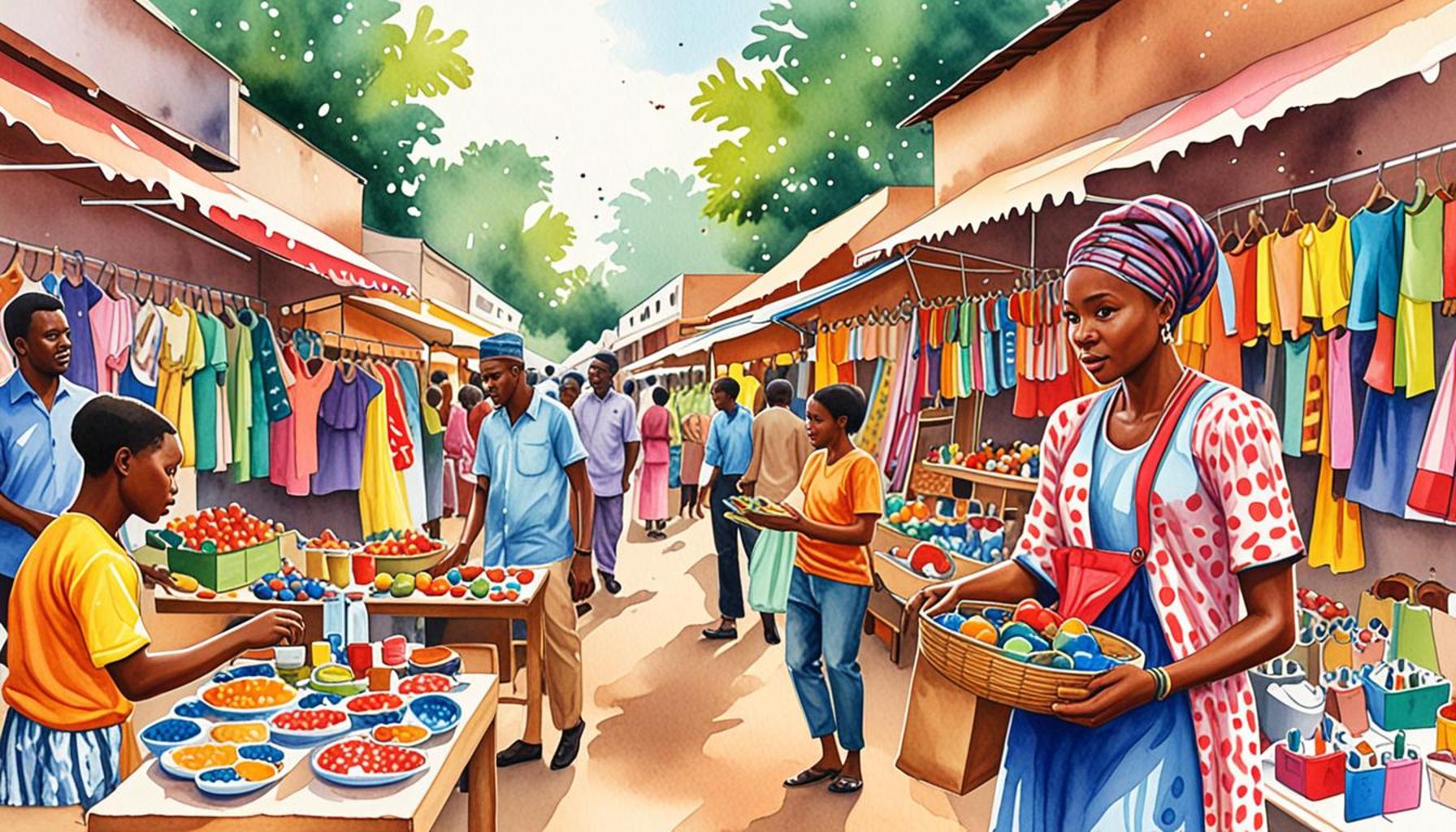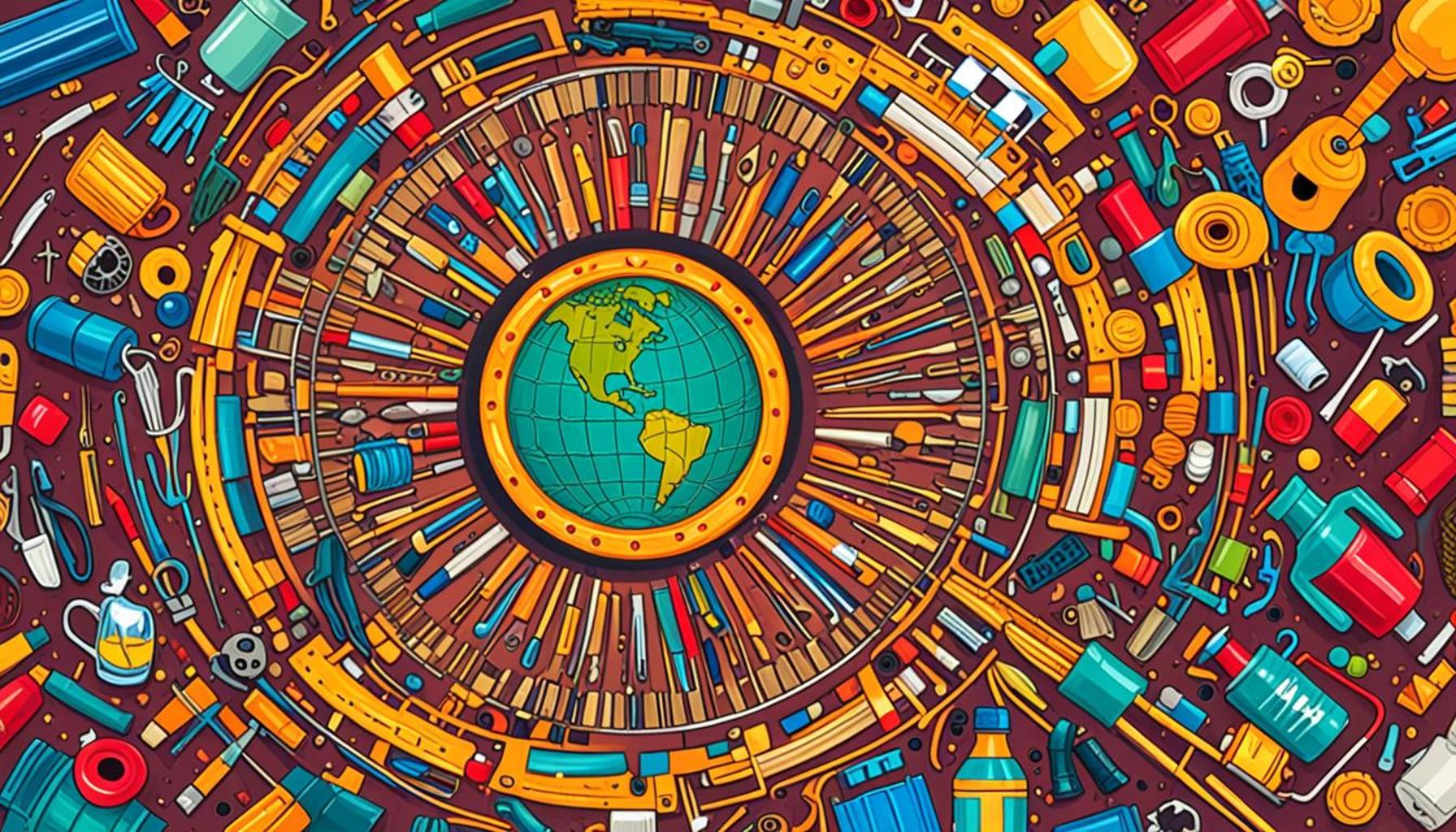The Impact of Craft Fairs on Promoting Creative Innovations in Nigeria

The Significance of Craft Fairs in Nigeria
Craft fairs in Nigeria have evolved into dynamic cultural events that attract a wide audience, including artisans, entrepreneurs, and art enthusiasts. These fairs create unique opportunities for artists to showcase their creative innovations, illustrating the diverse talents that thrive in Nigeria’s rich cultural landscape. With an increasing emphasis on the creative economy, these events are critical in shaping the future of craftsmanship and entrepreneurship in the nation.
Key elements that make craft fairs a vital component of Nigeria’s creative sector include:
- Diverse exhibit spaces that allow local artisans to display their crafts, ranging from traditional beadwork and pottery to contemporary fashion and home décor.
- Workshops and demonstrations that actively engage participants, providing hands-on experiences that educate them about various art forms and techniques, such as traditional weaving or modern graphic design.
- Networking opportunities that connect creators to potential buyers, industry experts, and fellow artisans, fostering collaborations that can elevate their work and expand market reach.
The impact of these events reaches far beyond showcasing talent. Craft fairs play a crucial role in stimulating economic growth and promoting cultural heritage, leading to:
- Increased visibility for innovative products, allowing local artisans to reach broader markets, including international customers.
- Encouragement of entrepreneurial skills among the youth, inspiring them to explore careers in arts and crafts, thus driving the next generation towards self-employment.
- Connection of traditional techniques with modern trends, blending age-old practices with contemporary styles to create new products that appeal to both local and global consumers.
As Nigeria pushes towards a more diversified economy, the importance of craft fairs cannot be understated. These events serve as indispensable platforms that promote not only the artistic capabilities of Nigerians but also the enduring spirit of innovation that is inherent in the country’s cultural expressions. By showcasing the vibrancy of Nigerian craftsmanship, craft fairs inspire a renewed interest in local art, often leading to new explorations in design and creativity.
In conclusion, understanding the impact of craft fairs illuminates their pivotal role in the evolving landscape of Nigerian creativity. By fostering collaboration, promoting sustainability, and preserving cultural heritage, these fairs are critical in inspiring a new wave of innovation that can propel Nigeria into a prominent position in the global creative economy.

LEARN MORE: This related article may interest you
Transforming Creative Visions into Reality
Craft fairs serve as a vital conduit for promoting creative innovations in Nigeria by providing a platform where imagination can flourish. They are not merely about showcasing crafts; they represent a vibrant intersection of culture, creativity, and commerce. With each fair, artisans from numerous backgrounds come together to bring their latest creations to life, often inspired by both age-old traditions and contemporary trends. This fusion generates an environment ripe for the exploration of new ideas and artistic expression.
One notable impact of craft fairs is their ability to showcase the journey of an artist’s work—from conception to completion. Artisans often leverage these events to display the meticulous techniques involved in their craft, allowing the public to witness firsthand the dedication and skill behind each piece. This interactive experience cultivates a deeper appreciation for traditional and modern innovations alike, reinforcing the connection between the artisan and the consumer.
Moreover, the role of craft fairs extends beyond mere exhibition. They are characterized by unique features that collectively enhance the artistic landscape of Nigeria:
- Live art demonstrations where skilled artisans illustrate their processes in real-time, engaging audiences with the intricacies of their craft, such as painting, pottery, or textile design.
- Collaborative projects facilitated during the fairs create connections between emerging artists and established professionals, allowing for the exchange of ideas and techniques that can spark new creative ventures.
- Curated workshops that encourage attendees to engage directly in hands-on experiences, thereby igniting their potential as future artisans and fostering a new generation of creators.
These events ignite conversations around the progress of local craftsmanship and innovation, often leading to exciting collaborations that transcend geographical barriers. For instance, artisans in Lagos might share their textile innovations with those in Kano, resulting in a cross-cultural exchange that enhances the richness of the Nigerian creative market. This blending of styles and ideas is crucial in the craft sector as it not only generates innovative products but also sets a dynamic pace for artistic evolution.
As the creative hub of Nigeria continues to grow, craft fairs remain essential in building a sustainable ecosystem for artisans. By providing crucial exposure, these fairs empower creators to transform their artistic passions into viable business opportunities. Local consumers gain access to unique and authentic products that reflect Nigeria’s diverse culture, while international visitors are introduced to the country’s rich and evolving art scene. Ultimately, the connection between craft fairs and creative innovations drives a ripple effect, fostering both cultural pride and economic growth.
The Impact of Craft Fairs on Promoting Creative Innovations in Nigeria
Craft fairs in Nigeria have emerged as vital platforms for artists, designers, and innovators to showcase their talents and products. These events not only highlight traditional crafts but also foster the integration of contemporary designs within cultural contexts. By bringing together local artisans, craft fairs encourage collaboration and exchange of ideas, facilitating a vibrant atmosphere for innovation. Furthermore, these fairs serve as a marketplace where creators can directly engage with potential customers, gaining valuable feedback and insights that can influence their future designs and innovations. The interactions fostered at these events are instrumental in building a community that values creativity and encourages continuous improvement. To illustrate the multiple advantages that craft fairs bring to the table, a structured overview can help contextualize their significance.
| Advantages | Description |
|---|---|
| Increased Visibility | Craft fairs provide artisans with essential exposure to potential customers and collaborators. |
| Cultural Exchange | These events promote diverse cultural expressions by integrating various art forms from different regions of Nigeria. |
| Networking Opportunities | Artisans can connect with other creators and potential investors, opening doors to future collaborations. |
| Market Insights | Engaging directly with customers provides valuable feedback that can shape product development and innovation strategies. |
Let’s delve deeper into how these aspects serve as catalysts for not just individual growth but also for the overall revitalization of Nigeria’s creative economy. By hosting craft fairs, there is a pronounced opportunity to revamp traditional practices and inject contemporary relevance, ultimately benefiting the broader society.
ADDITIONAL INSIGHTS: Expand your understanding here
Fostering Economic Development Through Creativity
The influence of craft fairs on Nigeria’s creative economy cannot be overstated. These events not only provide artisans with platforms to showcase their talents but also stimulate local economies. By attracting both local and international visitors, craft fairs become epicenters of economic activity, boosting sales for artisans and creating job opportunities in diverse sectors such as hospitality, transportation, and retail. For instance, the Lekki Arts and Craft Fair in Lagos has consistently drawn crowds, resulting in increased patronage for nearby hotels, restaurants, and shops, thereby fostering a ripple effect that benefits the entire community.
Moreover, the sale of crafts at these fairs promotes the globalization of Nigerian art. As artisans gain visibility, their works become sought after in international markets, leading to export opportunities that can transform their livelihoods. The distinctiveness of Nigerian crafts, characterized by traditional motifs and modern interpretations, attracts buyers who are eager to own a piece of Nigerian culture. Such demand creates pathways for artisans to innovate continuously, merging local craftsmanship with global trends and expectations.
Another remarkable aspect of craft fairs is their role in nurturing creativity among youths. Various programs, such as mentorship initiatives led by seasoned artisans, aim to equip young talent with both technical skills and business acumen. The Arts and Crafts Fair in Abuja has introduced a Youth Corner initiative where young creators are given free exhibition spaces and the opportunity to learn from industry veterans. This not only empowers the next generation of artisans but also helps in safeguarding traditional crafts against the threat of obsolescence.
- Networking opportunities abound at craft fairs, where artisans, buyers, and investors converge. Relationships formed during these events can lead to partnerships that span various facets of the creative industry, from joint exhibitions to collaborative projects.
- Sustainability practices are also highlighted at these fairs, as many artisans showcase eco-friendly products, raising awareness about the importance of environmental stewardship in craftsmanship. Events like the Eco-Craft Fair in Port Harcourt have increased consumer consciousness around purchasing sustainable goods.
- Increased visibility of female artisans is significant in Nigerian craft fairs, where numerous female-led initiatives thrive. This not only empowers women economically but also emphasizes their contributions to cultural heritage and innovation in crafts.
The community aspect of these fairs further enhances their impact. By bringing together artisans, consumers, and culture enthusiasts, craft fairs create spaces for cultural exchange and dialogue. Visitors not only purchase crafts but also leave with stories, deepened connections to Nigerian culture, and a heightened sense of appreciation for the richness embedded in every creation. This cultural dialogue is crucial, allowing for a deeper understanding of the narratives that define Nigeria’s diverse art scene.
In conclusion, it is clear that craft fairs significantly contribute to promoting creative innovations in Nigeria. They are more than just events; they encapsulate the spirit of collaboration, creativity, and cultural pride. As Nigeria continues to advance on the global stage, craft fairs remain instrumental in shaping a sustainable ecosystem that thrives on innovative artistry and economic growth.
CHECK OUT: Click here to explore more
Conclusion: Craft Fairs as Catalysts for Creative Innovation
In summary, craft fairs in Nigeria stand out as pivotal platforms that not only promote creative innovations but also bolster economic resilience within communities. These vibrant events provide artisans a unique space to exhibit their creativity while engaging directly with consumers and potential collaborators. The holistic impact of craft fairs extends far beyond mere sales; they serve as a convergence point for cultural exchange, economic development, and social empowerment.
The ripple effects of these fairs on local economies, evident through increased foot traffic and patronage of nearby businesses, demonstrate their significance in driving sustainable growth. Furthermore, by fostering a new generation of artisans equipped with modern skills and eco-conscious practices, craft fairs play a crucial role in ensuring the longevity of Nigeria’s rich crafts heritage. Programs like mentorship initiatives not only uplift young talents but also underscore the importance of maintaining cultural narratives amidst globalization.
As Nigeria seeks to carve its niche within the global arts scene, the continued support and evolution of craft fairs can be instrumental in shaping a dynamic and innovative creative economy. With each fair, artisans create not just products but stories that resonate with both local and international audiences. Thus, the future holds immense potential for Nigeria’s craft sector, driven by the infectious spirit of creativity fostered through these remarkable gatherings. It is imperative for stakeholders, from government to private investors, to recognize and harness this potential, ensuring that craft fairs thrive as vital engines of cultural and economic innovation.


